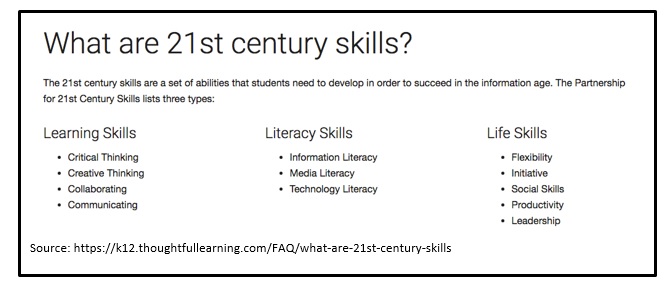STEM Lab
STEM Education (Science Technology Engineering Mathematics)
The U.S. Department of Education states the following,
“In a world that’s becoming increasingly complex, where success is driven not only by what you know, but by what you can do with what you know, it’s more important than ever for our youth to be equipped with the knowledge and skills to solve tough problems, gather and evaluate evidence, and make sense of information. These are the types of skills that students learn by studying science, technology, engineering, and math—subjects collectively known as STEM.”
Source: http://www.ed.gov/stem
“In a world that’s becoming increasingly complex, where success is driven not only by what you know, but by what you can do with what you know, it’s more important than ever for our youth to be equipped with the knowledge and skills to solve tough problems, gather and evaluate evidence, and make sense of information. These are the types of skills that students learn by studying science, technology, engineering, and math—subjects collectively known as STEM.”
Source: http://www.ed.gov/stem
This year, McKinley Elementary School will continue to foster student growth through its STEM (Science, Technology, Engineering, and Mathematics) class offered during the school day to all grade levels. Students will learn Standards-based instruction in math and science, through Problem Based Learning (PBL) labs, experiments, and activities, which allow practical application and real-world experience to be cultivated in collaborative settings.
There are 3 major components that the STEM classroom instruction will seamlessly weave together throughout the school year.
Component 1: STEM Content
The content for the PBL lessons will be rooted in the Science and Math content standards for each grade level. For instance, 2nd graders will have activities that reinforce and teach content from the 2nd grade Next Generation Science Standards (NGSS) and the 2nd grade Common Core State Standards in Math (CCSSM). This integration will help to further extend and enrich content at the students’ appropriate grade.
• Math: Within the CCSSM, there are 8 Mathematical Practices that are common among all grade levels. These Mathematical Practices will be embedded in curricula throughout the year to ensure that important habits are not only identified but also understood to be necessary requirements when conducting scientific investigations or experiments. For example, “Attending to precision” by labeling units as ounces or pounds is one habit students will be acquiring. The Mathematical Practices are listed below:
1. Make sense of problems and persevere in solving them
2. Reason abstractly and quantitatively
3. Construct viable arguments and critique the reasoning of others
4. Model with mathematics
5. Use appropriate tools strategically
6. Attend to precision
7. Look for and make use of structure
8. Look for and express regularity in repeated reasoning
More information regarding the 8 Mathematical Practices can be accessed at: http://www.corestandards.org/Math/Practice/
• Science/Engineering: Not only will the instruction for science align with the content standards at each grade level, but students will also use the scientific method and engineering design process through their PBL labs, experiments, and activities. The scientific method and engineering design process allows students to actively engage with the 8 Practices of Science and Engineering. These practices include:
1. Asking questions (for science) and defining problems (for engineering)
2. Developing and using models
3. Planning and carrying out investigations
4. Analyzing and interpreting data
5. Using mathematics and computational thinking
6. Constructing explanations (for science) and designing solutions (for engineering)
7. Engaging in argument from evidence
8. Obtaining, evaluating, and communicating information
More information regarding the NGSS and Practices of Science and Engineering can be found at: http://www.nextgenscience.org/get-to-know
• Technology: Students will be engaging with different forms of technology to assist in the following aspects of the STEM course:
o Research information (in order to make thoughtful hypotheses)
o Gather data
o Perform experiments
o Calculate results
o Collaborate within groups
o Communicate findings with others
o Present information through multi-media formats
1. Asking questions (for science) and defining problems (for engineering)
2. Developing and using models
3. Planning and carrying out investigations
4. Analyzing and interpreting data
5. Using mathematics and computational thinking
6. Constructing explanations (for science) and designing solutions (for engineering)
7. Engaging in argument from evidence
8. Obtaining, evaluating, and communicating information
More information regarding the NGSS and Practices of Science and Engineering can be found at: http://www.nextgenscience.org/get-to-know
• Technology: Students will be engaging with different forms of technology to assist in the following aspects of the STEM course:
o Research information (in order to make thoughtful hypotheses)
o Gather data
o Perform experiments
o Calculate results
o Collaborate within groups
o Communicate findings with others
o Present information through multi-media formats
Component 2: 21st Century Skills

In order for the STEM curriculum and class to thrive, students need to learn how to work together to solve problems. Not just any problems, but “tough” problems that do not necessarily have “only one correct answer.” Problems that are frustrating or require multiple revisions in the design process. Problems needing to be solved by flexible thinkers who can discuss ideas with teammates then come to consensus. During class, students will work in team/table groups to learn how to share their thinking, respectfully agree and disagree, understand the importance of communication in both speaking and listening, and learn from their successes and failures as individuals and as teams. The STEM class will aim at allowing students to grow as mathematicians, scientists, and engineers who are novel thinkers that experiment with outside-the-box ideas. Additionally, students will develop problem solving strategies and skills so they can learn what to do when they don’t know what to do! (Think “Apollo 13.”)
More information regarding 21st century skills can be found at: http://www.p21.org/
Component 3: Personal Standards
Throughout year, students will be held to the following 3 personal standards that are acquired from Project GLAD (Guided Language Acquisition Design). The 3 personal standards are to:
- Show respect
- Make good decisions
- Solve problems